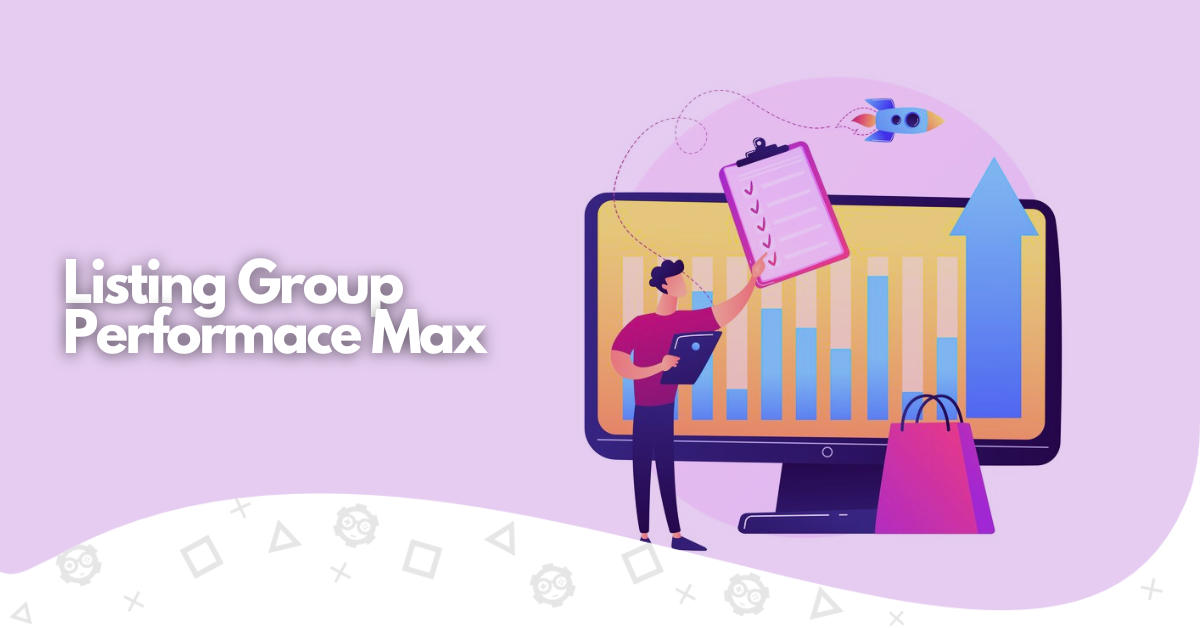Listing groups can be life savers when planning your performance max campaigns. They are directly related to your performance and how optimized your deliveries are.
However, for them to work and help you reach the advertising objective, all the aspects need to be correctly set up and optimized to align with your overall campaign. But don’t worry, we will help you with this task.
Here’s everything you need to know to optimize your Google Ads campaigns and asset groups for better results. Make sure to take a look at each step carefully. Otherwise, your Performance Max listing groups might not perform as expected or cause reverse results.
Here’s everything you need to know for your listing groups to work precisely as expected and boost your results:
What Is a Listing Group
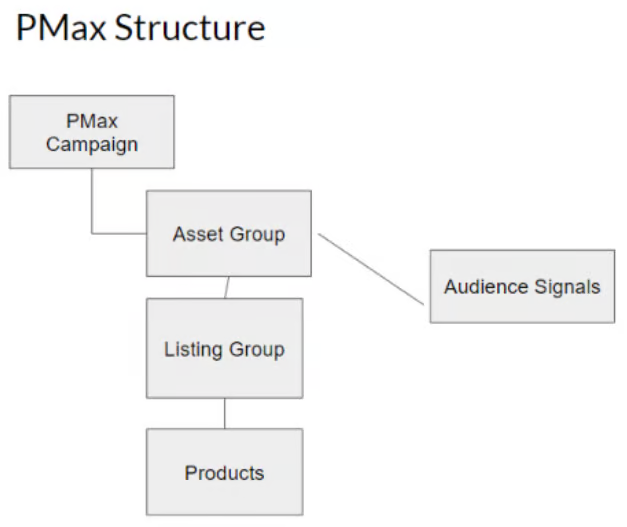
Before we see the applicable ad formats and other technical aspects of how the lists for performance max campaigns work, it is essential to understand what they are and why they can be game changers for your new and existing campaigns. If you don’t already know, here’s a simple explanation:
As the name suggests, it is a list you create in your Google Ads account to inform which products and collections should be included in your performance max strategy. You can sort the campaign’s asset group by type and function, making it easier to manage during the marketing efforts and also helping to optimize your performance max campaign by choosing the assets with better chances of converting.
It is basically a list used to specify the assets and products that will be served during the campaign. There are several ways you can sort your product groups into separate campaigns. You can do that based on the function of each one or the product category, for example.
The best way to do that will depend on your target audience, the number of campaigns you run, and many other factors, so don’t be afraid of listing groups differently than the others. It is correct as long as they help you organize the product feed and your information in the Google merchant center.
Why Creating These Custom Labels Is Important

There are many reasons why grouping products based on multiple factors is always recommended. It helps deliver the right assets to the target audiences, bringing down your ad spend. Moreover, choosing the right groups ensures more conversions and clicks to your landing page.
It has benefits regardless of the goal you selected on the Google Ads console, so whether you want to increase sales on your smart shopping ads or get more leads, make sure to set up your listings properly. The effectiveness is more expressive when running multiple campaigns or a performance max ad, but you can do that for a single campaign or other campaigns that Google allows as well.
However, the impacts of listing don’t stop only in the delivery of your campaigns. It can also help provide rich retail data about your performance max efforts and how the target audience reacts to a specific listing group. This way, you can better tell which ones have a greater effect and what can be changed to gather even better results.
Attributes of Your Listing Groups
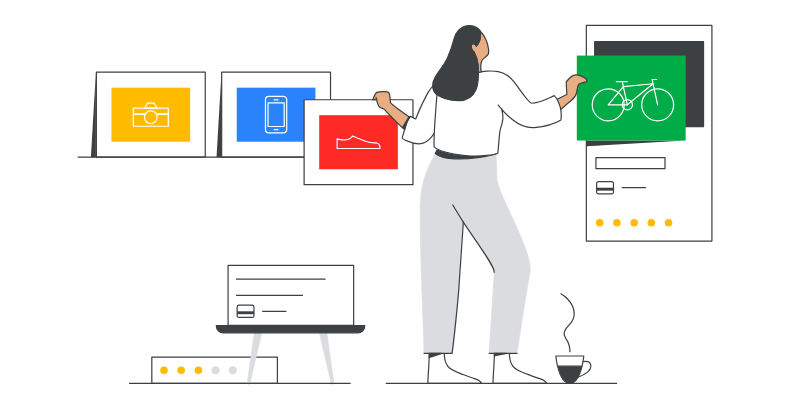
Your groups have different attributes to them that you can use to differentiate one from another. Here’s each one of them and what they mean:
- Category: The category to which the product you’re listing belongs. For example, food, electronics, toys, etc.
- Brand: You can also sort the brand of the product you listed. For example, Apple, Microsoft, Nike, etc.
- Condition: Google allows you to sort different conditions for the products you list. This way, you have better control over which ones are new and which ones are used, grouping them together.
- Channel: This is one of the most important attributes, and it lets you specify through which channels you sell each product.
- Item ID: An identification code unique to each product so you can easily find the specific asset by typing it.
- Custom Label: Similar to the ID. You can create special tags for each item to quickly find the specific product. For example, seasonal, special offer, etc.
How to Create Listing Groups for Performance Max Campaigns

Now, we will show you how to properly set up a listing group for your smart shopping campaign. Make sure to take a look at all items carefully so you can easily reach your goals with the shopping campaigns, whether to increase conversion action or maximize profit.
Here are the main steps you need to follow:
Log Into Your Google Ads Account
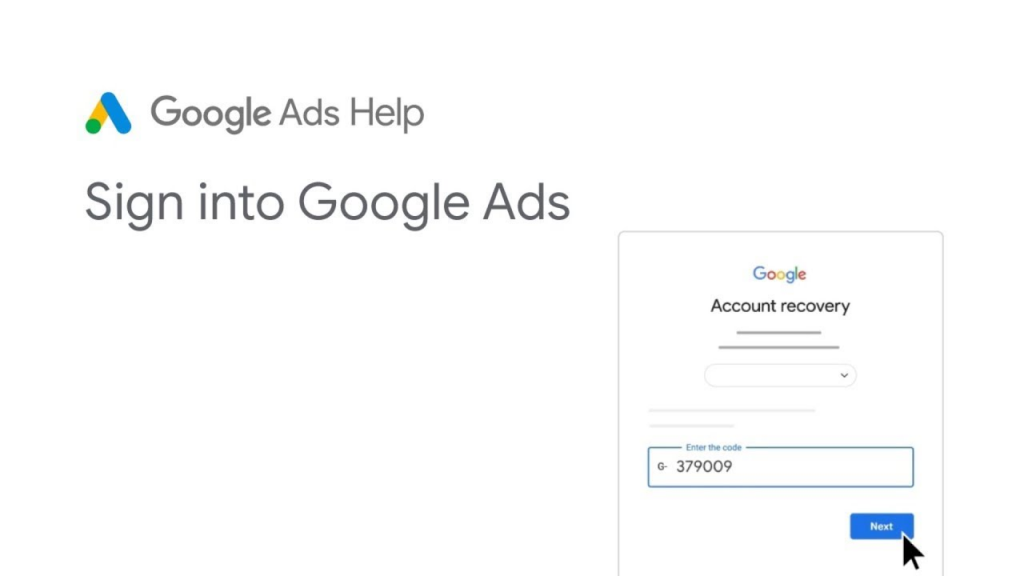
The first step is to log into your account to access Google’s tools and features and manage your marketing campaigns and the main specs of your Performance Max campaigns. It’s the same process for accessing all the products from Google Ads. Once you connect to your account, you can access the tools on the left tab, including the listing groups, insights tab, and many others.
Open the Campaigns Tab
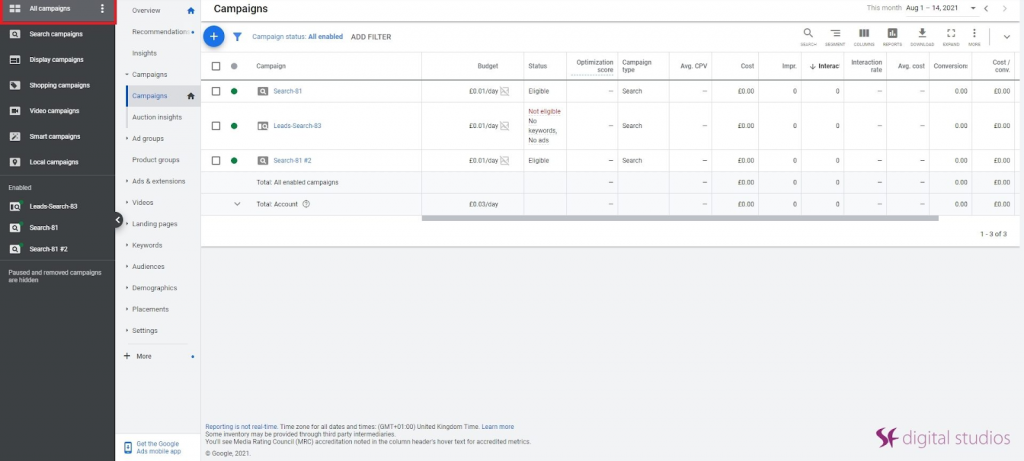
After logging into your account, you can check the left corner and open the campaigns tab. There, you can manage all your campaigns and marketing efforts, whether performance max actions, simple text ads, or any other Google marketing activity. You can also sort your campaigns by type so you can easily find your performance max ones.
After opening the tab, you need to select which campaign you want to attach the listing group to. Make sure to double-check that you selected the right campaign during this step. Otherwise, you might end up increasing the conversion value and decreasing other aspects of your ad depending on which settings you select.
Click on Listing Groups and Add a New One
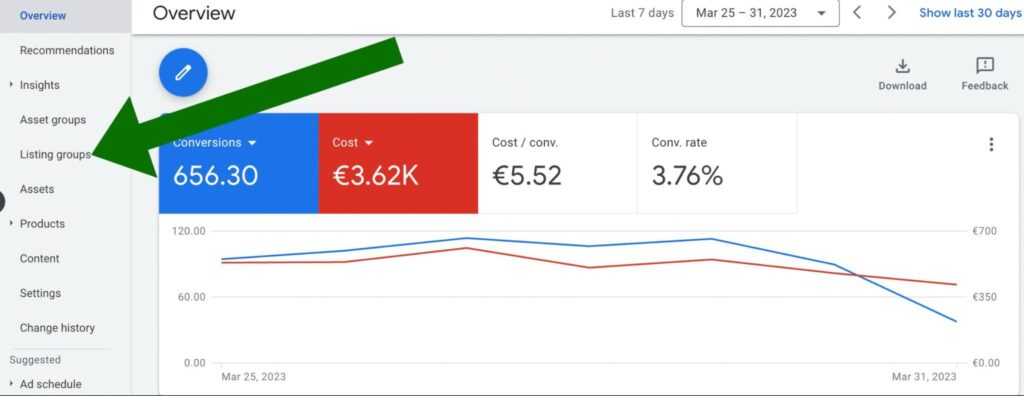
After selecting which campaign you want, you’ll notice a drop-down menu with multiple options, one of them being the listing groups. Then, click on the “+” icon, and the prompt screen to create a new list will pop up.
Now, you just need to set up the information we listed before (category, ID, etc.) to organize your list and optimize it when looking for a specific item. In each list, you feature the products you want to display to a particular performance max campaign or target audience so Google’s algorithm knows what to deliver to them.
You can do that by clicking with the right mouse button on the item and selecting “subdivide by.” With this, the menu for selecting each category will open, and you can completely manage each asset and listing to which you want to assign it. Notice that you can feature the same product in more than one list if it matches more than one audience or if you want it to be featured in multiple campaigns.
Select and Create the Subdivisions You Want

As we mentioned, Google has numerous subdivisions you can create and use to sort your assets inside the listing groups. This doesn’t mean you need to use all of them, but it is always a good idea to keep it as organized as possible, and this is one of the best ways.
By clicking on the asset, you’ll see the subdivision options, and with one more click, you’ll pop up the checkbox for all the divisions you want to add to your product. Each represents a different subdivision category you can add for organizing the assets inside the performance max campaign.
It is a very practical tool for optimization and a vital part of the process if you want the best results and efficient automation from Google’s algorithm.
Click Save and Confirm
Lastly, you just need to click save and confirm your choices. Once you do that, the listing groups will be ready to use on your new and existing performance max campaigns. They are the most efficient way to optimally reach your performance max audience since Google can better tell which assets to show for each campaign.
You can use this same process for both products and collections by following the exact same steps. Each of these products and collections carries retail data representing a category landing page on your website, which is why carefully filling in all the information is crucial.
Once you complete all these steps, you just need to monitor your campaigns and wait to see the direct results. Make sure to visit Google Analytics and the platform’s dashboard to compare the results before and after.
Tips for Optimizing Your Listing Groups and Overall Campaign
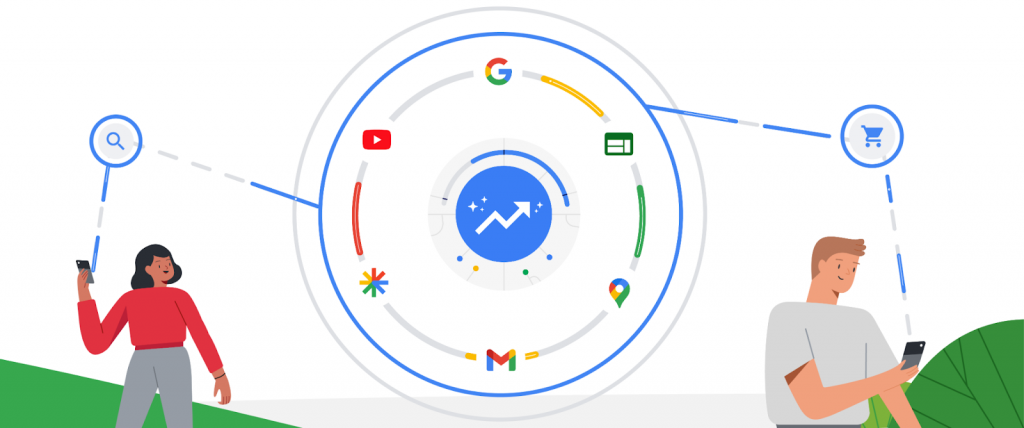
If you want to get the best out of your campaigns and take your business to the next level, here are some tips you can follow that will help. Make sure to look at each of them to see how they can impact your business model and how you can use them in your favor.
Don’t Forget the Basics of Performance Max

Listing groups are an essential tool and can really help your campaign, but they are not everything. If you’re using them for your PMax strategy, knowing what Performance Max in Google Ads is and its basics is indispensable.
Aspects like a well-defined target audience and quality assets for each platform where you’re posting your products are vital to reaching the desired results and objectives. Before you start thinking of the listing groups, make sure the other basic aspects are defined and optimized based on what you want, whether it’s to increase sales, website visits, or any other goal.
Double-Check Your Lists and Categories
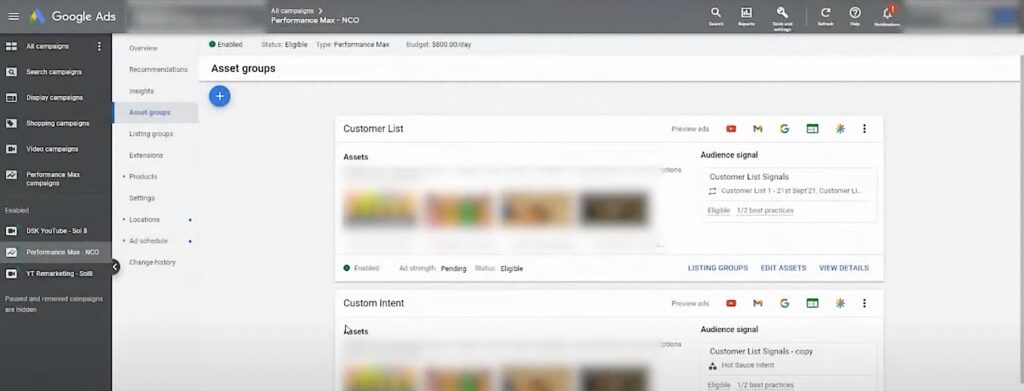
Lists are very effective, but they also impact every aspect of your ads’ delivery, so everything needs to be carefully planned and well-structured. Make sure to double-check your assets lists, groups, product URLs, and every other piece of information to avoid surprises along the way.
Mixing a different product with other brands or even featuring them on the wrong list might not destroy your campaign, but it will impact the assets delivered and the return on ad spending of your actions. Don’t be afraid to take your time making these lists and parts of the campaign. They are also important and can be decisive factors for its success.
Conduct Keyword Research Before Spending on Ads
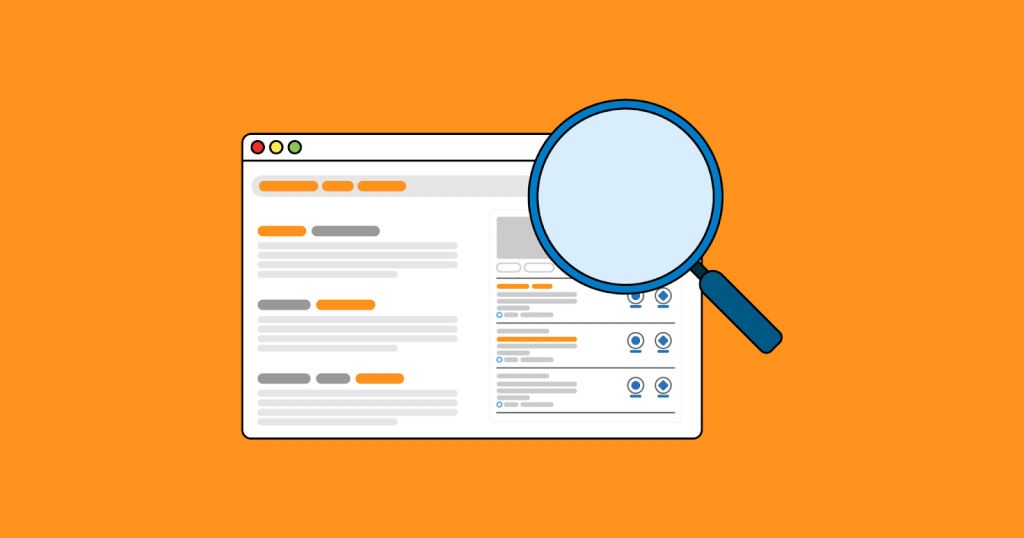
Whether you’re investing in paid advertising or search engine optimization, keyword research is an indispensable part of the process. It helps you to structure your ads and the content inside your landing pages. This is an important step because these words can drastically change depending on your product type and industry.
This kind of ad is not different. Understanding Performance Max negative keywords and the most sought-after terms helps you stay ahead of the competition, not only when selling these specific products but also as a company, appearing first on search results, whether paid or organic.
Hire a Professional Agency
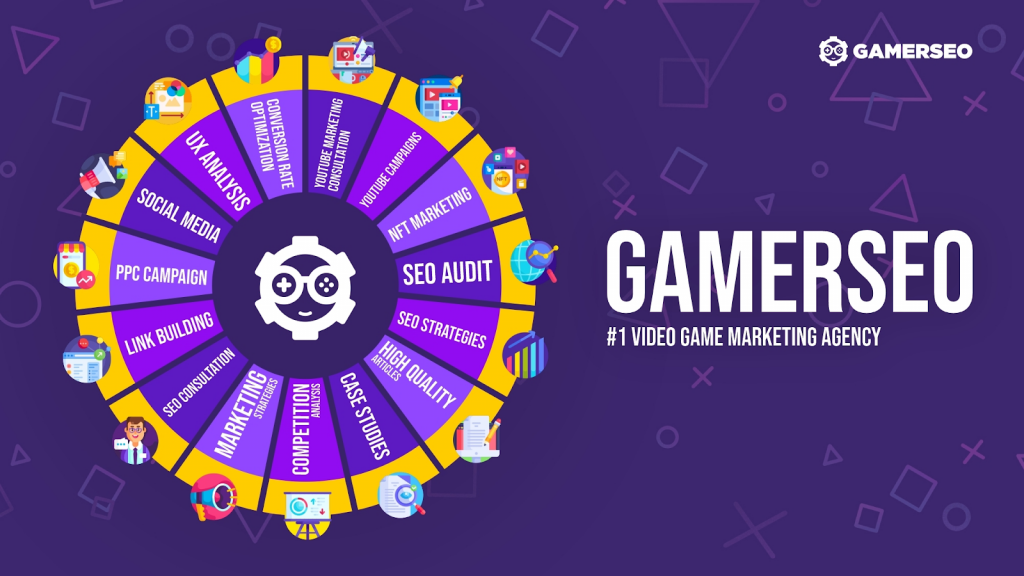
If you want the best results possible in the most optimized way, there’s no doubt that hiring a professional marketing agency is the best way to go. There are numerous advantages to leaving your campaign to a professional with experience, from time optimization of other business tasks to the assurance of quality results.
At GamerSEO, we have the best professionals on the market, with years of experience, to ensure the best results for your business. Whether you’re looking for a way to gather more customers or increase your revenue, we have exactly what you need to take your company to the next level.
There’s no better way to increase business online performance than quality marketing. Join us, and let’s develop campaigns aiming directly at your objectives for the best results possible.
Conclusion on Listing Groups for Performance Max Ads

Creating a performance max listing group can be the perfect way to organize your campaigns and reach even better results, whether in terms of profit or the costs of your PMax efforts. However, for the tool to have this positive effect, everything needs to be correctly set up and Google’s guidelines followed. From the subcategories you add to the number of products featured in each list, everything will impact the overall performance of your activities.
Remember that even though listing can help your campaign to perform better, it is not the most important aspect, and the basics of your campaign also need to be optimized if you want to reach your objectives and effectively communicate to your target audience.
Now that you know everything you need, it is time to start creating your listing groups. Make sure to create as many subcategories as you need and double-check everything before posting your campaigns for the most efficient results.

A PPC specialist who started with organic social media. For several years, the core of his activities are:- Google Ads, Microsoft Ads, Meta Ads, TikTok Ads, Twitter Ads, Linkedin Ads. He has led campaigns with a global reach, e.g. for FootballTeam, G2A, ETOTO, as well as many smaller campaigns in the sports, construction and financial industries. Has full focus on ROAS. Privately, a fan of football, history of wars and Star Wars.

